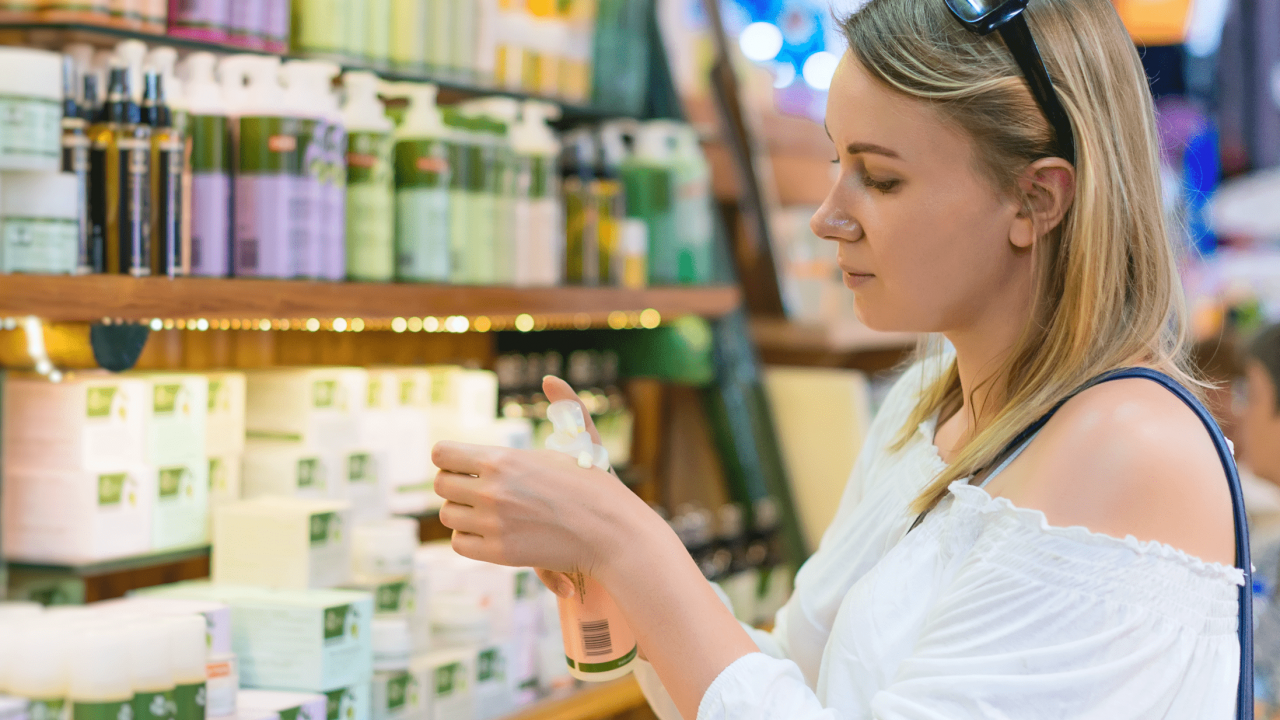
It’s been a long and hard year, and many of us are looking forward to the festivities and traditions of the holiday season. Although Covid-19 restrictions make it difficult for many to celebrate in person with their loved ones, holiday gift-giving will remain in force.
Cosmetics and perfumes are among the most popular gift choices each year, and this trend is expected to continue, with stores offering deals on a wide assortment of fragrance and cosmetics gift sets.
The 2020 holiday retail survey from the consumer research firm Deloitte shows that nearly a third of shoppers will buy cosmetics and fragrances as gifts, and they are also among the most frequent items that shoppers buy for themselves. Nearly every major retailer, from high-end department stores to neighborhood specialty shops, displays festive towers of boxed cosmetics and perfumes, or features these products prominently on their websites.
Consumers may assume that these products are free of concerning ingredients, but this is not always the case, so when shopping for any personal care products, read the ingredients label, then choose a brand that discloses the chemicals in its formula.
Gift sets that include eye shadow palettes continue to be a popular wish list item for teens and preteens. Adolescence a key time in development, so it’s even more important to pay attention to the ingredients used in products you are giving kids and teens.
For instance, toy makeup kits may contain contaminated or potentially hazardous ingredients, like asbestos, lead and chemicals linked to serious health hazards. EWG recently reported results of laboratory tests that found the notorious carcinogen asbestos in one in seven talc-based cosmetic samples tested – including eye shadow, foundation, blush, and face and body powders. Exposure to asbestos is linked to asbestosis, mesothelioma, and lung and ovarian cancer. Even exposures as short as a few days can cause mesothelioma, an incurable cancer, many years later.
It’s also important to make sure the brand doesn’t hide toxic chemicals behind the term “fragrance.” The fragrance in perfume, cologne and body spray may be concocted from any number of the fragrance industry’s 3,100 stock chemical ingredients, the blend of which is often kept hidden from the consumer. Makers of popular scents market their signature aromas with terms like “floral,” “exotic” and “musky,” but few disclose that their formulas are actually a complex cocktail of natural essences and synthetic chemicals, like phthalates, which are hormone disrupters linked to reproductive problems.
There is very little regulation of the U.S. personal care products industry. No other class of products is so widely used, and in such large quantities, with so few safeguards. Federal legislation on cosmetics safety has not been meaningfully updated since 1938, and personal care products, including cosmetics, are not required to go through even basic safety tests.
More than 40 other countries have stricter regulations than the U.S. when it comes to key ingredients such as formaldehyde, parabens and the toxic “forever chemicals” known as PFAS. Some nations regulate the use of more than 1,600 chemicals in cosmetics, but the Food and Drug Administration has banned or restricted only nine for safety.
September saw a major victory in cosmetics regulation with the passage of California’s Toxic-Free Cosmetics Act, the largest step forward in U.S. cosmetics regulation for decades. California is the first state to ban 24 toxic chemicals in personal care products, including cosmetics and perfumes. The new law will protect millions of Californians by banning some of the most hazardous chemicals from cosmetics products, and because of the size of the state’s market, it will likely influence cosmetics manufactured for the entire nation.
For now, check out EWG’s Skin Deep® cosmetics database, which provides ratings for almost 82,000 personal care products and helps you choose those with the fewest hazardous ingredients. The EWG Healthy Living app brings these ratings to your fingertips in an easy-to-use format, so you can choose the healthiest gifts on the go this holiday season. And look for the EWG VERIFIED™ mark on products. You’ll know right away that they have been formulated to the strictest safety standards and transparency.



